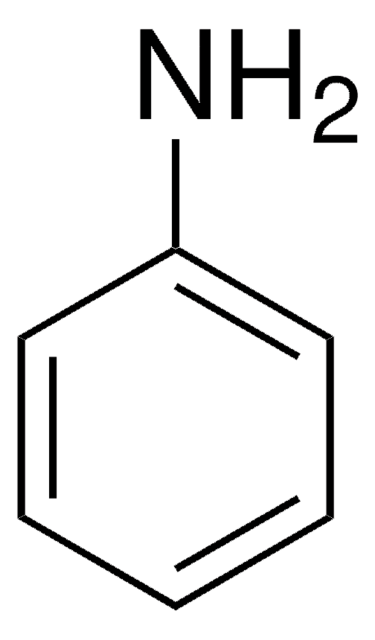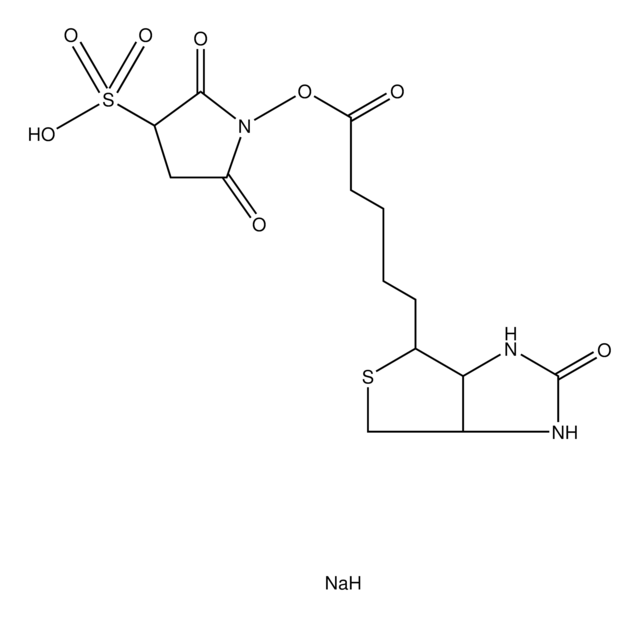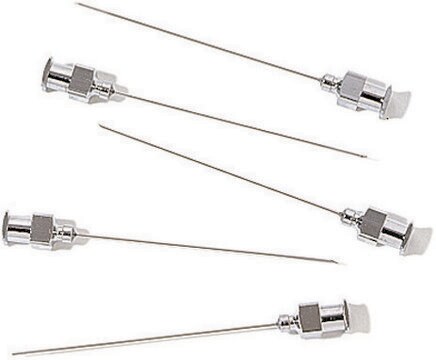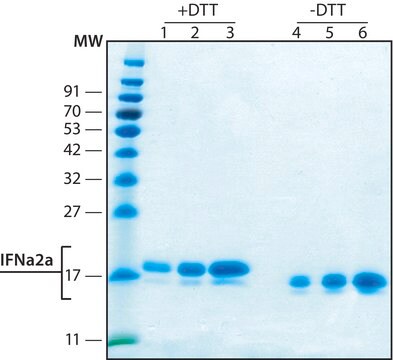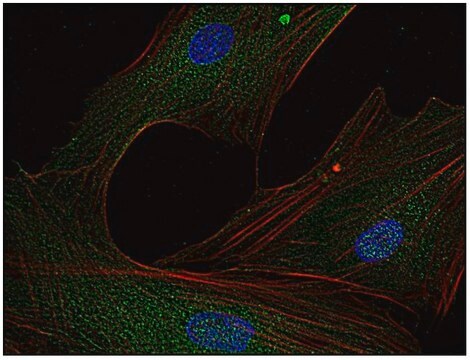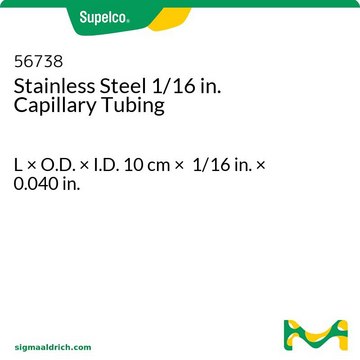MAB411
Anti-Interferon-α2 Antibody, clone ST2541
ascites fluid, clone ST2541, Chemicon®
Sinónimos:
Interferon alpha-2, IFN-alpha-2, Interferon alpha-A, LeIF A
About This Item
Productos recomendados
origen biológico
mouse
Nivel de calidad
forma del anticuerpo
ascites fluid
tipo de anticuerpo
primary antibodies
clon
ST2541, monoclonal
reactividad de especies
human
fabricante / nombre comercial
Chemicon®
técnicas
ELISA: suitable
affinity binding assay: suitable
neutralization: suitable
western blot: suitable
isotipo
IgG1
Nº de acceso NCBI
Nº de acceso UniProt
Condiciones de envío
dry ice
modificación del objetivo postraduccional
unmodified
Información sobre el gen
human ... IFNA2(3440)
Descripción general
Especificidad
Inmunógeno
Aplicación
Neutralizing Analysis: A representative lot neutralized human IFN-αA (IFN-α2) and IFN-αN (produced by Nalmalwa human Burkitt′s lymphoma cells), but not IFN-α1, antiviral activity against Semliki Forest Virus in human WISH amniotic epithelial cell cultures (Shearer, M., et al. (1984). J. Immunol. 133(6):3096-3101).
Affinity Binding Assay: A representative lot captured human IFN-α2, but not human IFN-α1 (Shearer, M., et al. (1984). J. Immunol. 133(6):3096-3101).
ELISA Neutralizing Analysis: A representative lot was used as the detection antibody for the detection of human IFN-αN (produced by Nalmalwa human Burkitt′s lymphoma cells) by sandwich ELISA (Shearer, M., et al. (1984). J. Immunol. 133(6):3096-3101).
Western Blotting Analysis: A representative lot detected IFN-αA (IFN-α2) and IFN-αN (produced by Nalmalwa human Burkitt′s lymphoma cells) under reducing condition by Western blotting (Shearer, M., et al. (1984). J. Immunol. 133(6):3096-3101).
Inflammation & Immunology
Cytokines & Cytokine Receptors
Forma física
Almacenamiento y estabilidad
Información legal
Cláusula de descargo de responsabilidad
¿No encuentra el producto adecuado?
Pruebe nuestro Herramienta de selección de productos.
Código de clase de almacenamiento
10 - Combustible liquids
Clase de riesgo para el agua (WGK)
WGK 1
Punto de inflamabilidad (°F)
Not applicable
Punto de inflamabilidad (°C)
Not applicable
Certificados de análisis (COA)
Busque Certificados de análisis (COA) introduciendo el número de lote del producto. Los números de lote se encuentran en la etiqueta del producto después de las palabras «Lot» o «Batch»
¿Ya tiene este producto?
Encuentre la documentación para los productos que ha comprado recientemente en la Biblioteca de documentos.
Nuestro equipo de científicos tiene experiencia en todas las áreas de investigación: Ciencias de la vida, Ciencia de los materiales, Síntesis química, Cromatografía, Analítica y muchas otras.
Póngase en contacto con el Servicio técnico
